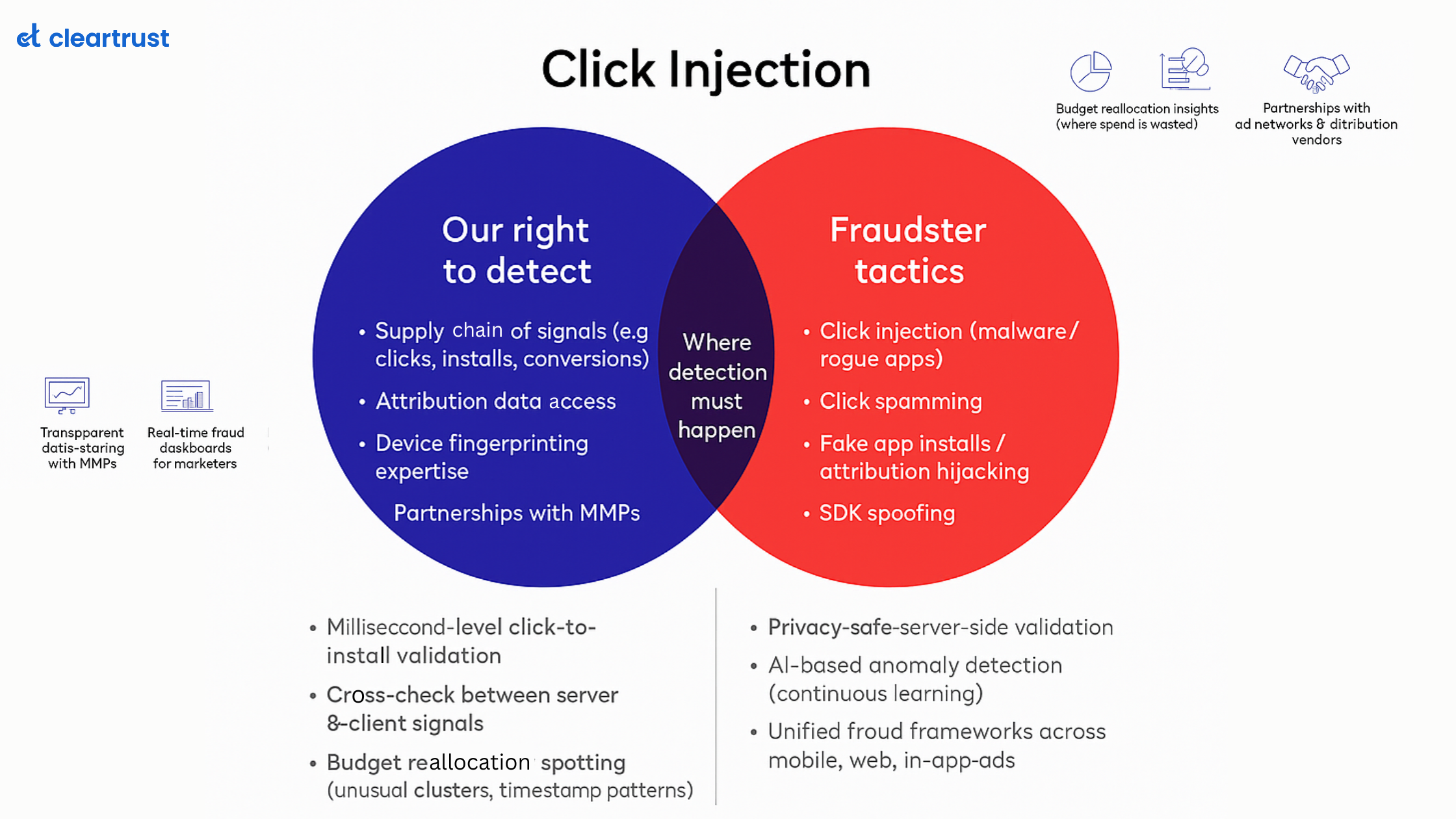Ad clickings based on the total number of installations generated from the campaign are an important metric for any online business today. The journey of an app install involves multiple consumer touch points but an advertiser is charged the moment the installation happens.
For a CPI model, install frauds are a cause of concern as the more the number of fake installs due to fraudulent ad clicks, the more is pressure exerted on an advertiser’s campaign. In some cases, it is easy to realize that something seems off about the campaign when installation takes place from a list of suspected devices.
However, with the advancement in technology, fraudsters have started deploying complex techniques to simulate the process of a fake app installation as a genuine one. It is only when the campaign numbers are analyzed in detail that the truth is revealed. Research has revealed that 31% of iOS apps and 25% of Android app installs are fraudulent
Let us understand install fraud in-detail.
What is install fraud?
App install fraud is a mobile ad fraud technique by which programmatic fraudsters fake the app installs to claim a share of the revenue from the advertiser’s app campaign budget. These frauds can be carried out through various methods, but the most popular one is the install farm method. The entire process is as follows:

While the main focus of an advertiser is to ensure that the campaign objective is achieved, the invalid traffic metrics arising from fake ad clickings are given less than the deserved attention until the campaign ends. An advertiser, for example, may have an objective of generating 0.5mn app installs through a specific campaign. Until the target is achieved, the advertiser would ensure that more publishers join the affiliate program so that the number of installs can increase.
Once the campaign ends, it might be brought to the notice of the advertiser that 20 or 30% of the installs were generated from a suspected device which means zero conversion in the actual sense.
What are the main techniques of app install fraud?
1. Device farms
As previously discussed, device farms are like click farms which consist of humans hired for the purpose of clicking the ad’s tracking links and generating a fake impression, subsequently followed by the app download. There are multiple devices used for this purpose. Once the app has been installed from the campaign-specific link, it is uninstalled and the device is reset so that it can be used again.
2. Device emulators
These are automated forms of device farms. It functions from multiple servers. These servers have multiple devices connected to them disguised as organic audiences. The emulators are programmed in such a way that they can fake a new device by changing their identity at different intervals. As a result, detecting such emulators is quite a task.
3. SDK Spoofing
Software Development Kit (SDK) spoofing or traffic spoofing is a method of creating fake install data without an application being installed in the first place. These kits are placed by marketers in their apps to track the performance of their marketing efforts. Fraudsters usually spoof such kits and showcase a real-time install to the advertiser when in reality, neither has the ad been clicked nor has the app been installed. This is a highly sophisticated technique but can be a cakewalk for someone who knows how communication between the ad networks and the mobile measurement partner works.
What are the consequences of app install fraud?
A primary setback of these frauds is the loss of revenue for the affected advertisers. Given the disclosure laws in place, it is not an easy task to verify the nature of installation without a fake install detection software in place. As a result, blinded by fake numbers, advertisers fall prey to these frauds.
Moreover, users develop a negative opinion of the app when it does not function according to the advertised standards. Dissatisfied with the service, the user may delete the app or consider leaving a pessimistic review about it. This damages the reputation of the advertiser and creates mistrust among the target audience.
Apart from the advertisers, the publishers are also affected when their inventories fall prey to such fraudulent techniques. The advertiser may lose trust in the publisher as they do not deliver the promised number of genuine clicks on their ads.
How can one avoid install fraud?
Ad fraud management brands like ClearTrust offer a mobile ad fraud solution to tackle the never-ending problems ranging from app install fraud to ad stacking in the mobile advertising ecosystem. With seamless integration and the power of control resting in the hands of the user, our solution can verify, block and provide detailed reports on the presence of invalid traffic.







